The history of cinema is filled to the brim with examples of memorable villains. Indeed, more often than not, the success of a film relies as much (if not more) on the quality of its bad guy as it does on the hero! Thanks to the high bar set by these iconic wrongdoers – including legendary figures like Hannibal Lecter, the Joker, and Darth Vader – filmmakers have to try harder than ever to craft a truly impressive villain.
That might explain the increasing trend towards baddies created entirely through CGI, with directors convinced that we’ve now reached the limits of what can be achieved using flesh-and-blood actors covered in prosthetics. To be fair, when these digital delinquents are done well, the results are truly impressive, delivering the kind of malevolent on-screen threat that could only be imagined previously.
However, when an artificial antagonist falls flat, the impact on a movie can be devastating. We’re not overstating things when we say that several films released in the last few decades have been totally wrecked – or at the very least, severely hampered – by an unconvincing computer-generated monstrosity.
Here are 15 Terrible CGI Villains That Ruined Movies.
General Grievous – Revenge of the Sith
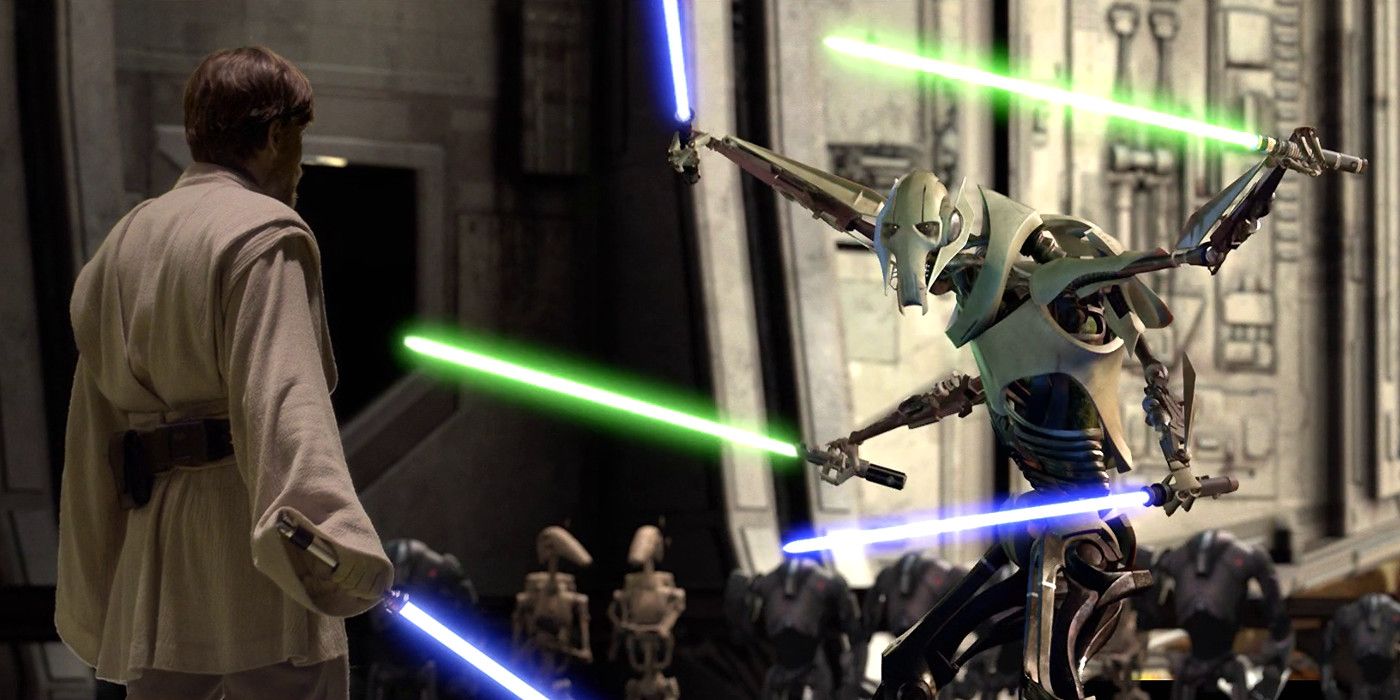
The poster child for CGI overkill, Revenge of the Sith’s General Grievous could only ever have been realized with visual effects technology. After all, this cyborg baddie is comprised of largely non-human droid components, making it next to impossible for an actor to portray him. But that doesn’t mean we’re letting the General off the hook!
See, the issue here isn’t really the decision to resort to CGI to bring Grievous to life. Indeed, the digital effects on display are pretty much faultless, especially by 2005 standards. No, the problem is that Grievous was even included in the movie in the first place.
From his distracting, hacking cough through to his ludicrously over the top physical gimmick – four lightsaber-wielding arms? Seriously? – an enemy this goofy has no place in the Star Wars universe, much less on cinema screens.
Abomination – The Incredible Hulk
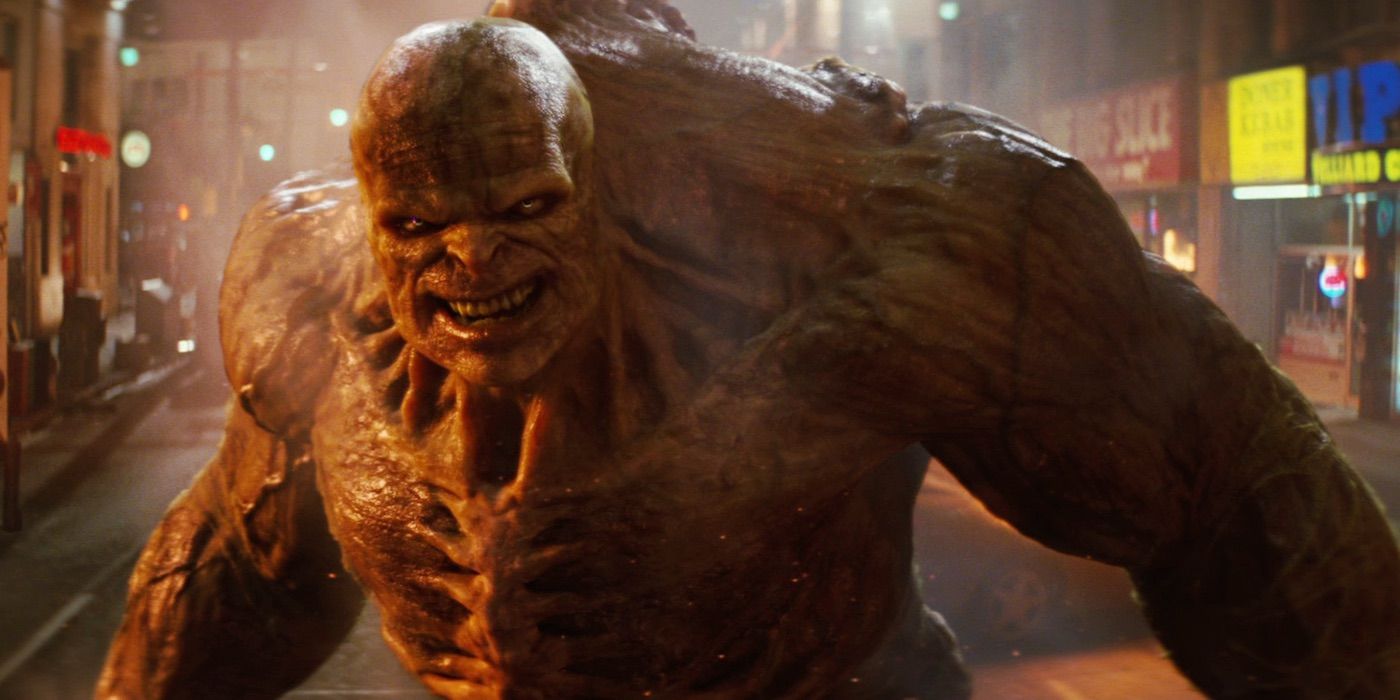
Talk about living up to a name: The Incredible Hulk villain Abomination couldn’t be more aptly named. A bland monster-man rendered with CGI that is neither brilliant nor terrible, this pixel-based powerhouse is vastly more intimidating when portrayed by Tim Roth in his regular human form.
Perhaps this is because the threat posed by Roth, as power-crazed commando Emil Blonsky, is – despite his less-than-imposing physique – more inherently believable than the threat his inhuman digital counterpart poses. Or maybe it’s because Abomination’s character design – a grotesque spin on the Hulk himself – invites unintentional comparisons with an off-brand action figure.
Frankly, we think the real reason that Abomination is such an unimposing antagonist is tied to the underlying nature of The Incredible Hulk’s final showdown. Revolving around two entirely CGI characters going toe-to-toe, this climax offers audiences plenty of spectacle, but precious little to connect with on an emotional level.
Steppenwolf – Justice League
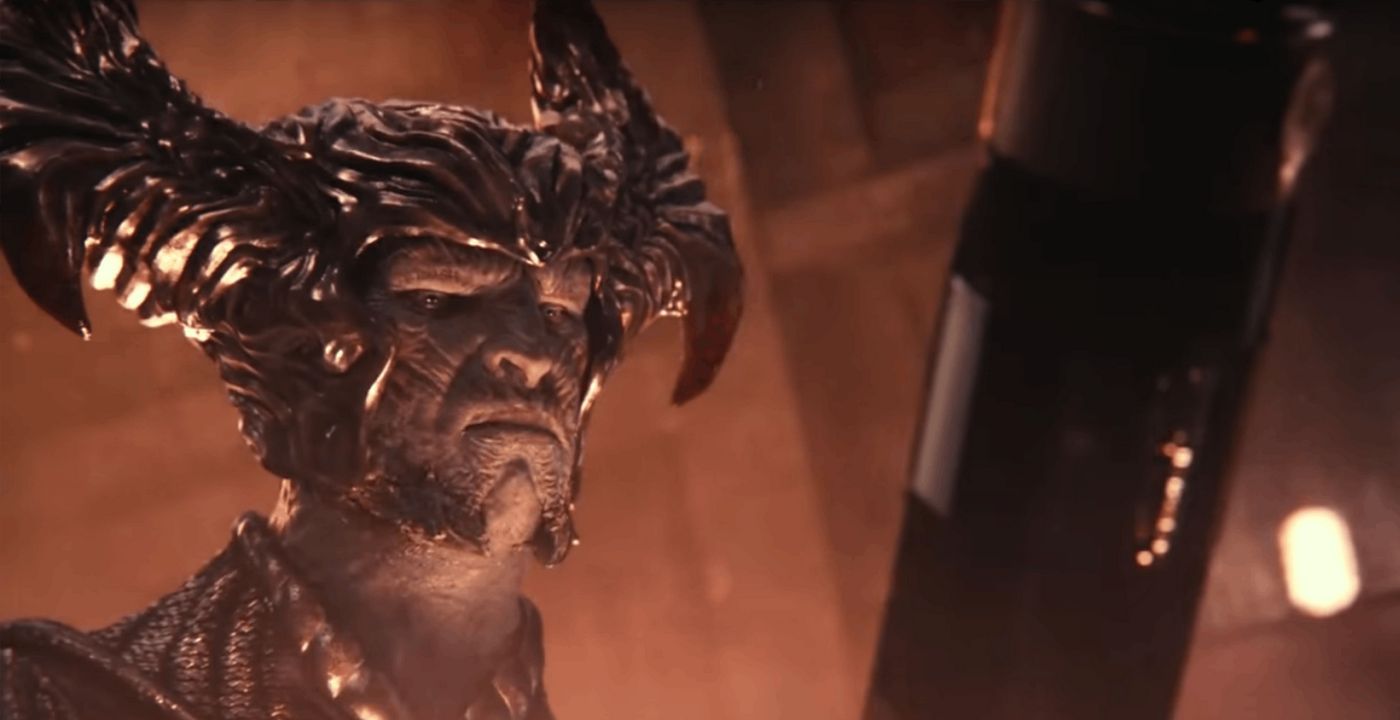
While some might argue that the real digital villain in Justice League is the shoddy CGI used to mask Henry Cavill’s moustache, the film’s actual big bad Steppenwolf isn’t much better. There’s just so much wrong with this cosmic warlord, it’s hard to know where to begin, and that’s without even touching upon how paper-thin his motivations and characterization are.
Perhaps the most frustrating part about Steppenwolf isn’t how unconvincing he looks – which is quite possibly the result of rushed effects work related to a rumored last-minute redesign – it’s how easily this could have been avoided.
Other than his inhuman stature, there’s nothing about this guy that couldn’t have been achieved with practical make-up effects, and even this could have been overcome by digitally scaling up a physical performer.
Apocalypse – X-Men: Apocalypse
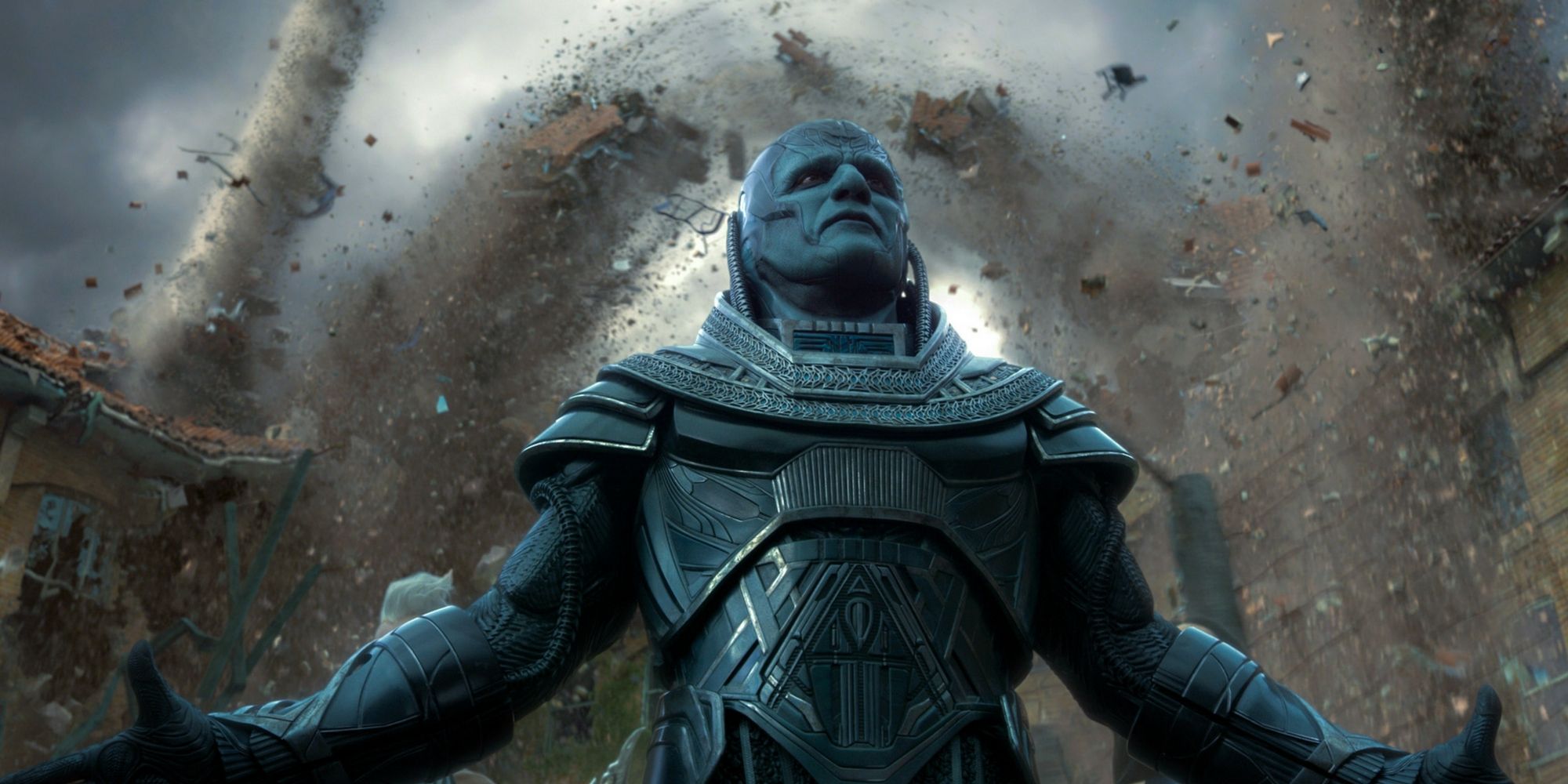
While prosthetics and CGI-augmentation over totally digital performers is generally preferable, we have to admit that sometimes this combo flat-out doesn’t work – as was seen in X-Men: Apocalypse.
Here, eponymous villain Apocalypse should have been brought to the big screen using CGI and motion capture – it’s really the only way you could ever faithfully replicate the ancient mutant’s enormous frame and distinctive aesthetic style. Instead, director Bryan Singer opted to bury Oscar Isaac in sub-par prosthetics and costuming, leaving the talented actor looking disconcertingly like Power Rangers foe Ivan Ooze.
In those scenes where visual effects were used – and where Apocalypse technically becomes a “CGI villain” – the results are equally disappointing. The scene where an enormous Apocalypse tosses Charles Xavier around like a rag-doll is an incredibly goofy-looking excuse for a boss battle.
The Lizard – The Amazing Spider-Man
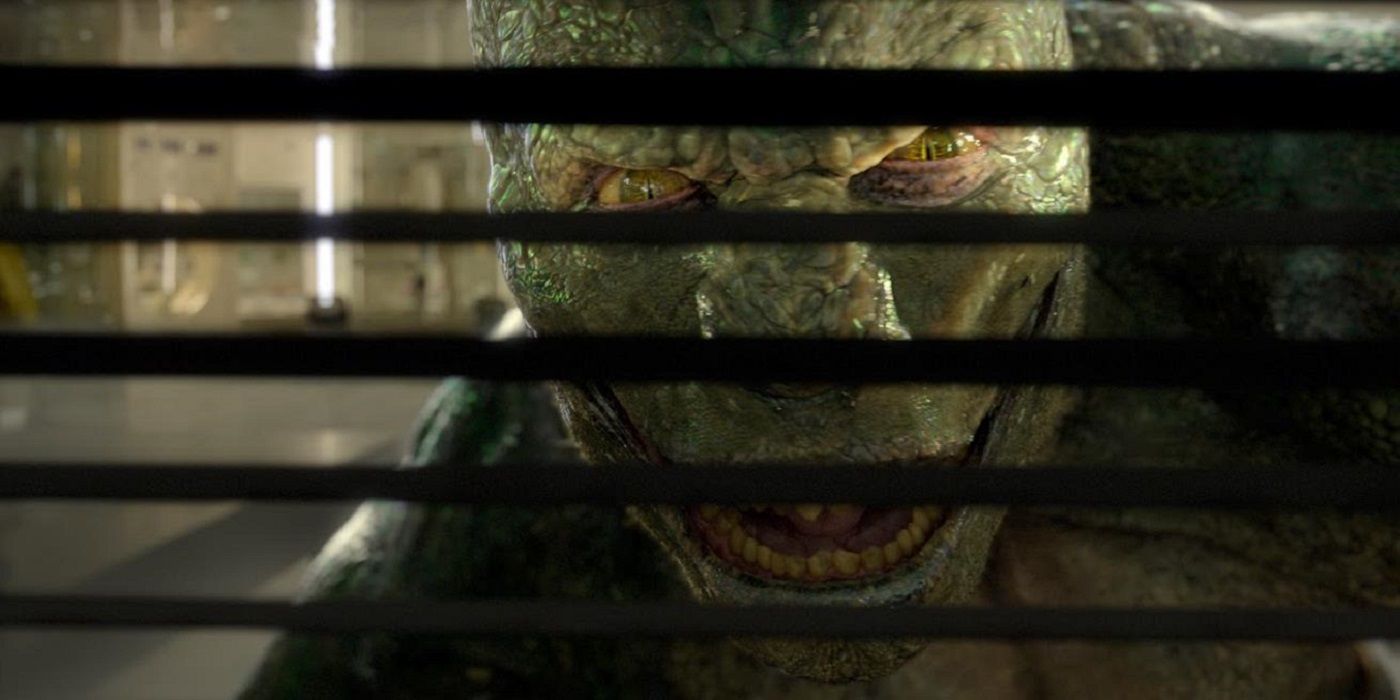
Yet another comic book villain that could only ever have been created purely via digital effects techniques, the Lizard in The Amazing Spider-Man nonetheless fails to impress. A lot of this has nothing to do with the actual CGI itself, which is well animated and nicely textured. No, the blame here lies with the character design – radically altered from its comic book source material to the point the Lizard looks like the poor man’s version of Batman baddie Killer Croc.
Admittedly, it’s easy to see how this happened. The filmmakers needed the Lizard to be able to talk – otherwise, why hire an actor of Rhys Ifans’ caliber for the part?
G oing with a comics-accurate reptilian snout was never really an option since lip-syncing was needed. But the final facial design they settled on is so bizarre – even by the standards of lizard-person – that they should have explored more options.
Azog The Defiler – The Hobbit
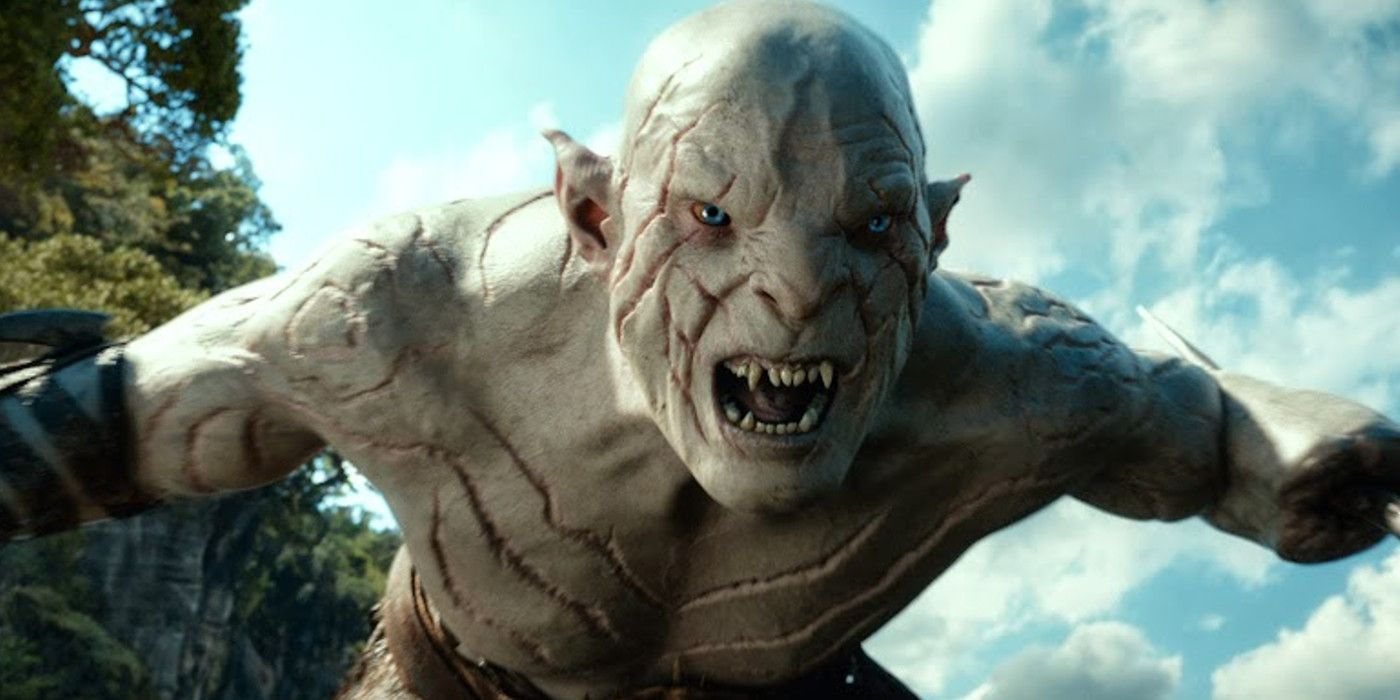
Back when Peter Jackson helmed The Lord of the Rings trilogy, he was praised for balancing practical and digital effects work. This included the film’s legions of orc warriors, who were – epic wideshots aside – designed via prosthetics (incorporating the occasional subtle CGI tweak, where necessary).
Fast forward to The Hobbit trilogy, and this restraint fell by the wayside, with much of Middle-earth now manufactured inside computers – even Orc commander Azog! It’s not that the CGI used for this albino antagonist is terrible, it’s just that it never quite convinces, and just seems a bit pointless.
After all, there’s nothing about this guy that makes him impossible to create with make-up, as the previous trilogy already proved. Indeed, this was the original plan, however Jackson decided to totally overhaul Azog’s design during production, leaving Weta Digital no choice (and very little time) to replace him with a digital alternative. This Orc lacks the texture and grit of the Lord of the Rings beasties and it really shows.
Ultron – Avengers: Age of Ultron
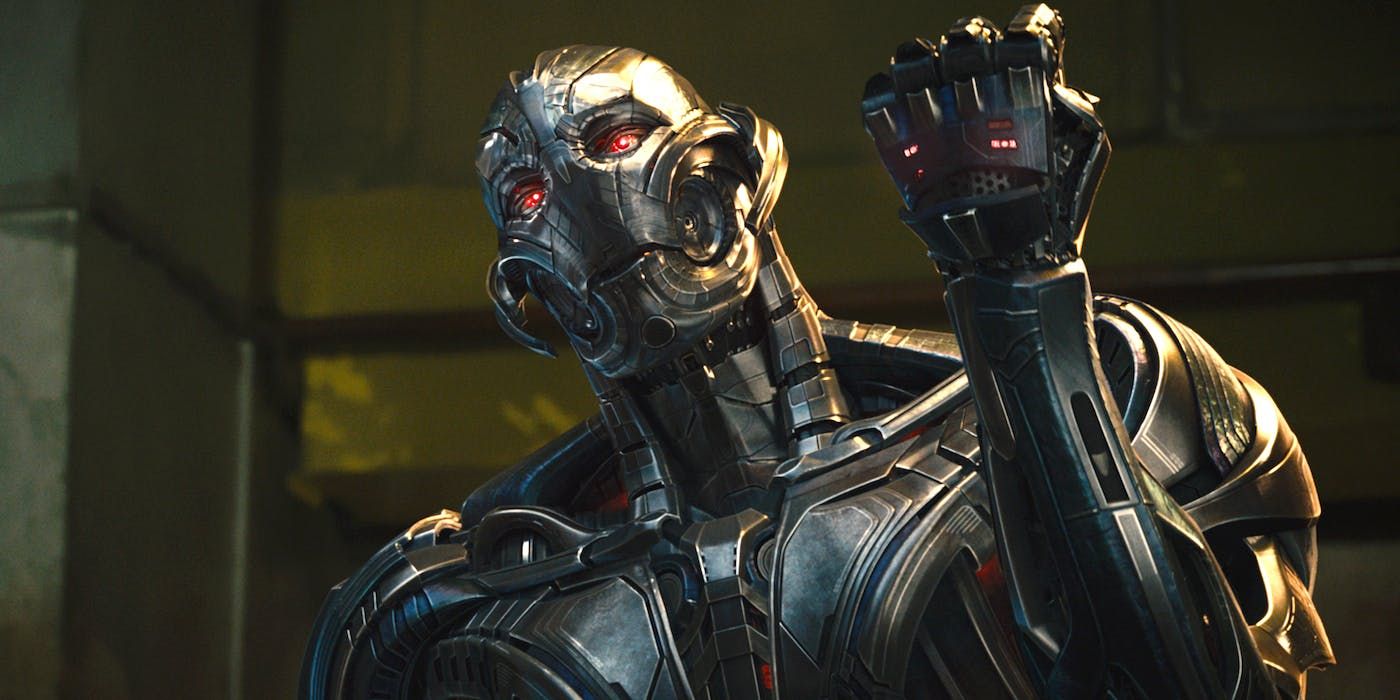
Given the combined creative chops of those behind Ultron in Avengers: Age of Ultron, it’s gobsmacking just how forgettable this robotic big bad ends up being. Sure, the digital effects involved are seldom less than top notch – what would you expect with so many of the industry’s finest effects houses on call? And yes, James Spader’s vocals are a perfect fit for the sophisticated yet sinister murder-bot.
So where does it all fall down? Mostly, it’s how writer-director Joss Whedon has scripted the part, with Ultron ultimately just a little too glib to be taken seriously as the genuine menace he’s intended to be. Then there’s the villain’s redesigned face, which allows for a wider degree of emotion than his comic book counterpart, but which sacrifices much of fearsome aura as a trade-off.
Incubus – Suicide Squad
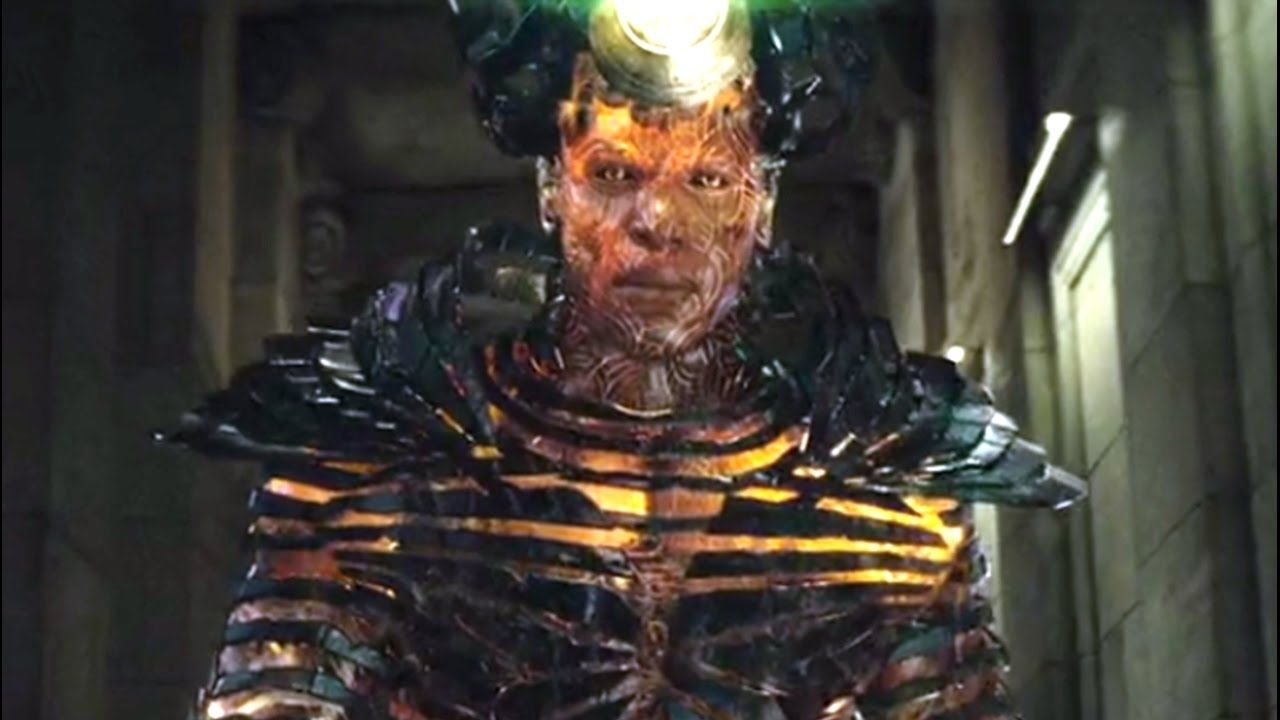
Generally regarded as one of the weaker entries in Warner Bros.’ DCEU, villain team-up romp Suicide Squad features several questionably crafted bad guys and gals – but none really hold a candle to the CGI debacle that is Incubus.
A hastily-rendered bit of digital effects business, this guy comes across as reminiscent of a kind of luminous, mechanized bumblebee, which should provide an indication of just how intimidating he seems.
The real crime here – and one far greater than anything committed by any member of the Squad – is just how poorly developed Incubus is as a character. Seriously: he’s so thinly-drawn, he makes someone like Steppenwolf look positively layered by comparison. This all adds up to an utterly disposable villain, easily forgotten by audiences. Seriously, did you even remember there was another villain besides Enchantress?
Grand Moff Tarkin – Star Wars: The Force Awakens
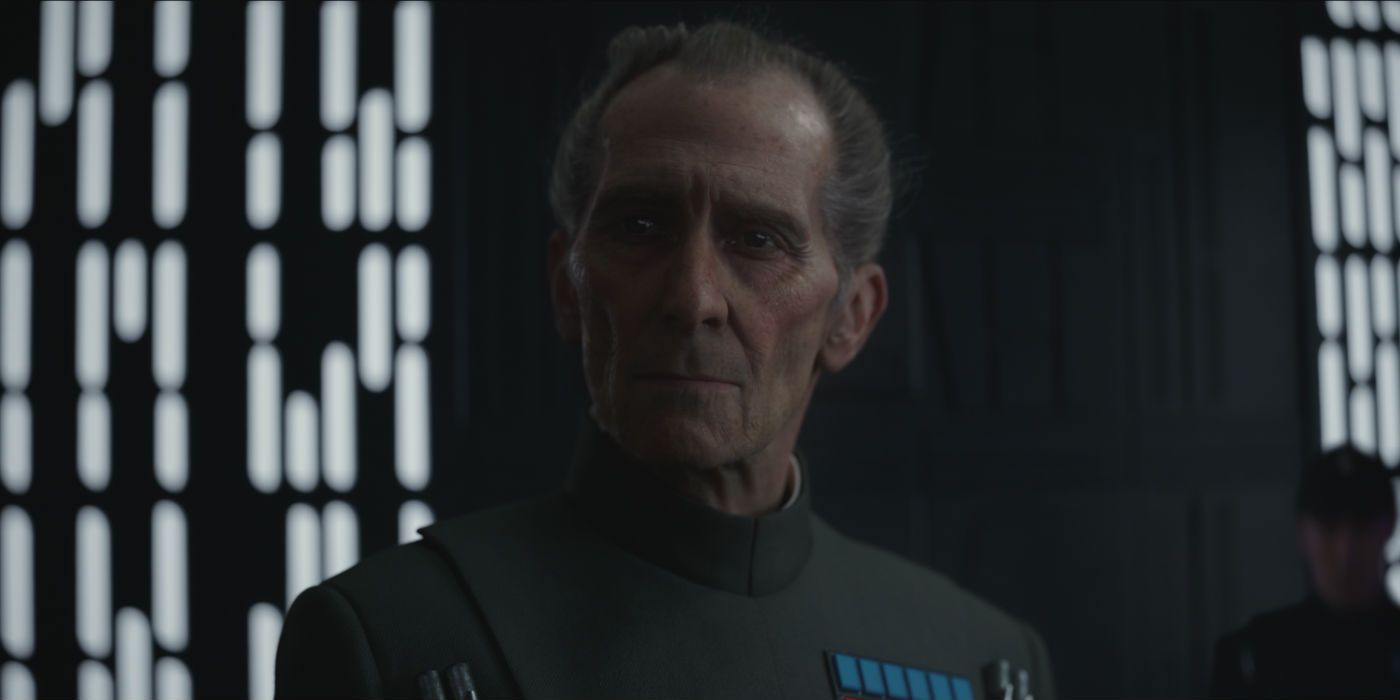
Peter Cushing, the gifted character actor who portrayed Grand Moff Tarkin in Star Wars – Episode IV: A New Hope, died in 1994. Rather than recast the role in Rogue One: A Star Wars Story, director Gareth Edwards turned to digital effects wizardry – some would say “black magic” – to resurrect the late thespian for an extended cameo appearance.
The CGI on display here is at times genuinely breathtaking, which only serves to make the occasional “iffy” moments – think weird mouth movements and other facial ticks – all the more jarring.
Given Edwards was so eager not to hire a new actor to play the role, it seems like he should have streamlined the amount of screentime that Tarkin featured in. This would have allowed his visual effects artists to focus on perfecting only a relatively brief number of shots, enabling them to iron out any “uncanny valley” kinks in the process.
The Hemocytes – I Am Legend
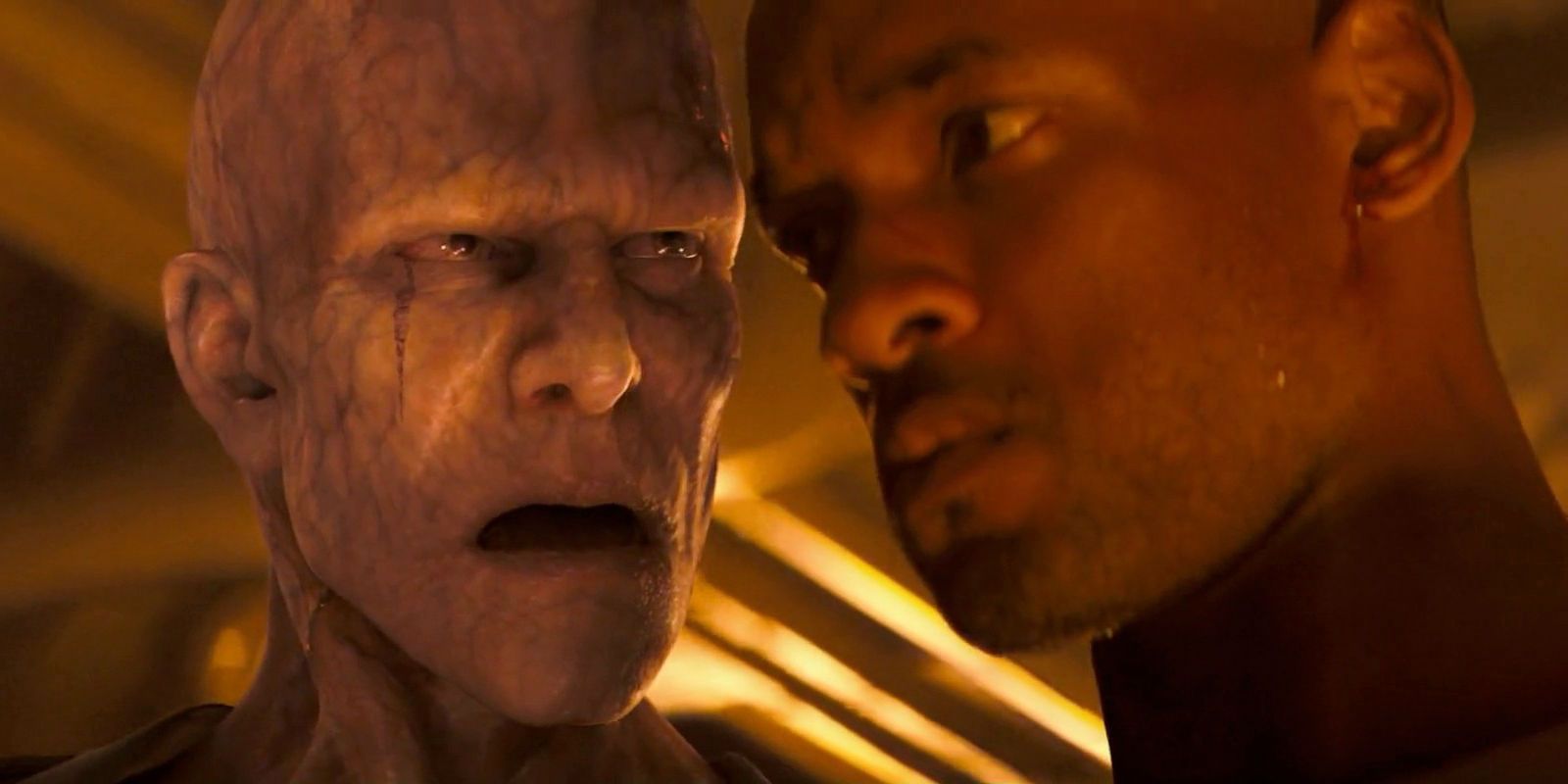
In fairness to I Am Legend director Francis Lawrence, he and his crew did initially attempt to bring the movie’s vampiric, infected human baddies to life through non-CGI means. Unfortunately, the practical make-up effects developed to realize these beasties – known as “hemocytes” in the script – were deemed not up to snuff, and Lawrence was forced to go down the visual effects route instead.
Alas, even more unfortunately, the entirely digital hemocytes didn’t turn out all that well, either. Despite receiving a beefed-up budget and extended post-production time, the filmmakers failed to conjure a mutant menace that was even vaguely believable, let alone terrifying.
Indeed, these rubber-faced, gape-mouthed pseudo-vampires were more likely to elicit groans – or even giggles – from audiences, rather than gasps of horror.
Doomsday – Batman v Superman: Dawn of Justice
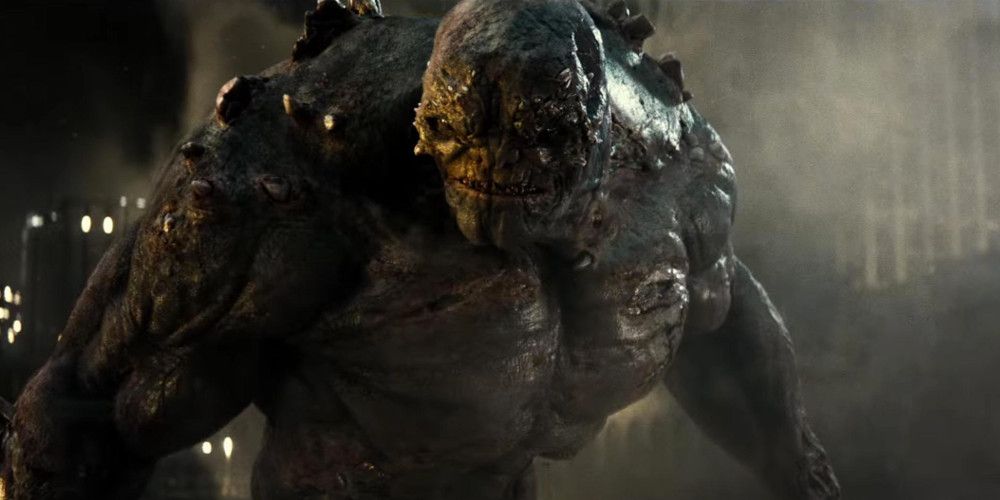
Batman v Superman: Dawn of Justice is a highly divisive film, but even among its most ardent defenders, there are those who agree that the movie’s CGI depiction of Doomsday is far from successful. Spending much of his appearance resembling a deformed cave troll who wandered onto set from Middle-earth, Doomsday – notorious as the bloodthirsty monster who once killed the Man of Steel – is an unwelcome addition to an already overstuffed finale.
Yes, we all go to superhero movies expecting to see a large-scale super-powered dust-up. But by the time this ugly abomination enters the fray, we’ve already sat through a lengthy, effects-heavy final battle and aren’t exactly begging for more action.
There are also echoes here of the problem that arose in the Hulk/Abomination face-off mentioned earlier – namely a lack of emotional engagement owing to the minimal human presence on screen.
Deacon Frost/La Magra – Blade
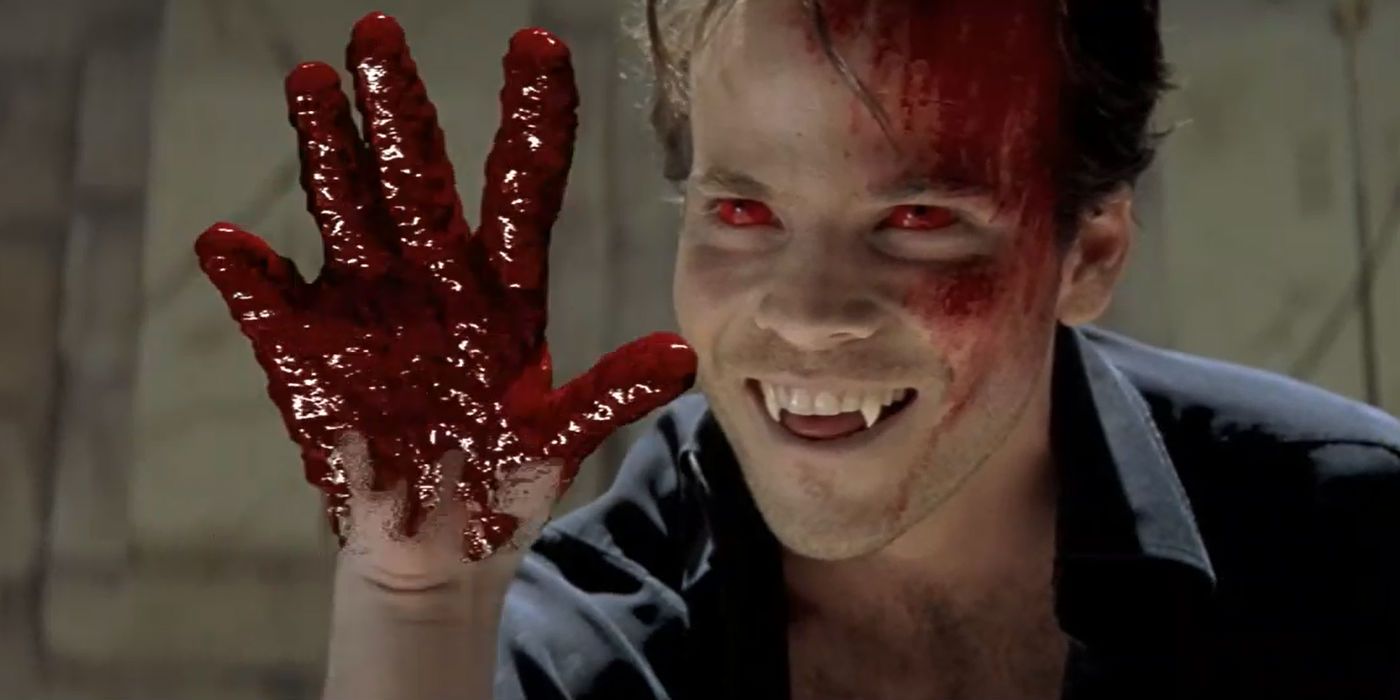
We know what you’re thinking: “Wait a minute! Deacon Frost wasn’t a CGI villain in Blade!” And strictly speaking, you’re absolutely right – for the vast majority of the film, that’s pure, unadulterated Stephen Dorff on the screen. However, once vampire nogoodnik transforms into the blood god La Magra, he relies heavily on CGI-based physical powers and they’re… not very good.
As with several other entries on this list, the root cause of this stems from the visual effects of the time not being able to convincingly match the filmmakers’ vision. In Deacon Frost’s case, this means that shots of him regenerating severed limbs formed of animated blood wind up looking cartoonish.
Even less impressive is the sight of our guy’s torso suspended in mid-air on a column of human claret spurting from his waist – which aside from looking fake, is ridiculous even by the less-than-subtle standards of this franchise.
Spider Smith – Lost in Space
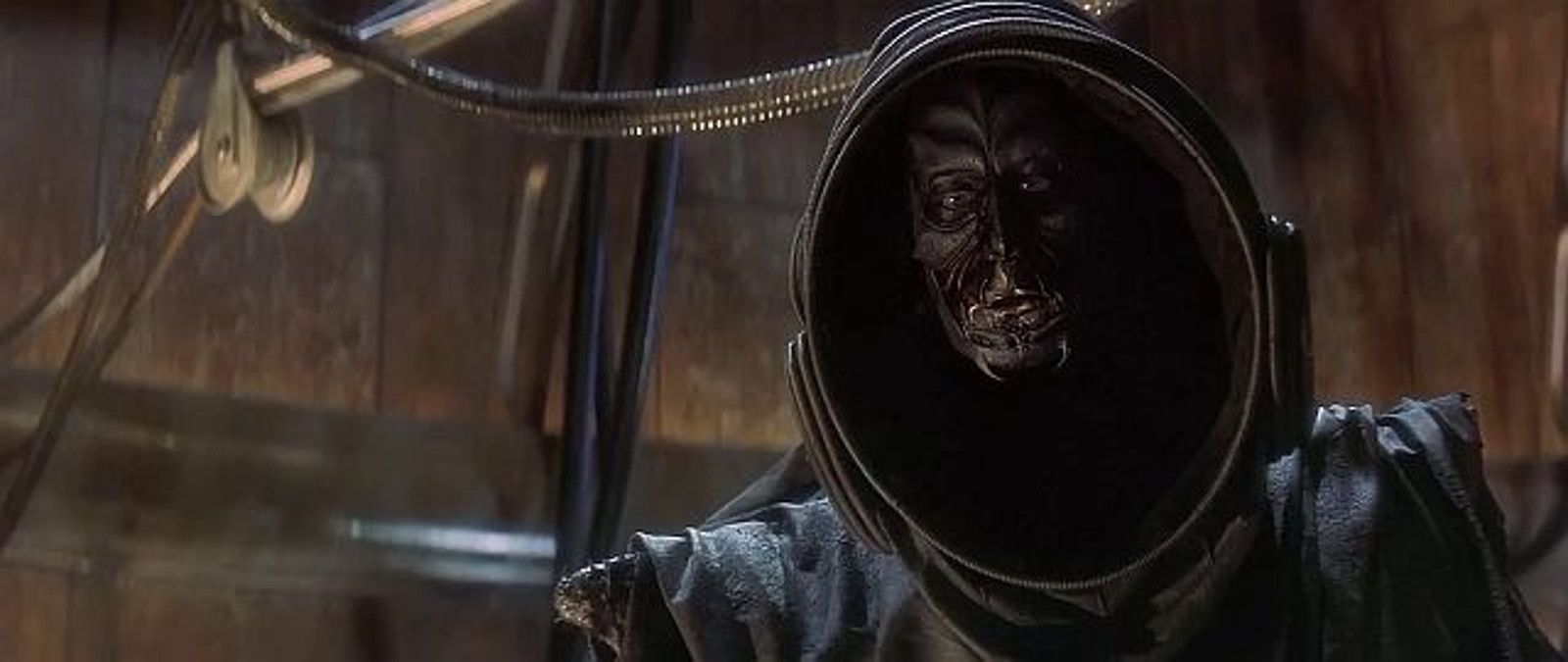
Although many actors struggle to perform effectively when covered in heavy prosthetics, finding it difficult to convey a full range of emotions, there are those who have a real knack for it. Gary Oldman is one such actor, and he’s famous for his chameleon-like ability to appear wildly different from one film to the next. This makes the creative choice to substitute the acclaimed thespian with a digital replacement in the remake of Lost in Space all the more baffling.
It has to be said that today, you could justify this decision by taking advantage of modern motion capture technology to believably create a “spiderized” version of villain Doctor Smith without sacrificing any of Oldman’s acting prowess. But back in 1998, relying on the comparatively primitive CGI available in favor of simply booking in more time for Oldman to sit in the make-up chair was definitely not the right call.
The Mako Sharks – Deep Blue Sea
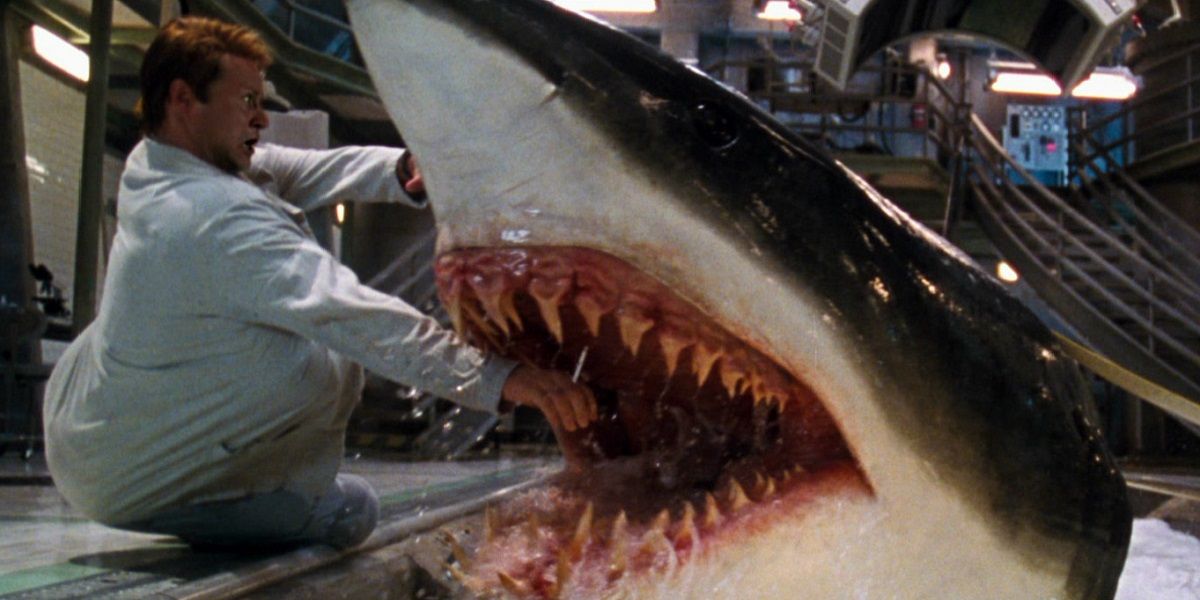
Jaws is famous for how little audiences actually see of the titular shark – a by-product of director Steven Spielberg having to work around the malfunctioning practical effects version of the creature. This is an approach the team behind Deep Blue Sea would have been better off emulating, as the CGI employed for their own super-intelligent Mako sharks is likewise broken.
Again, this is an occasion where filmmakers in the late ’90s thought contemporary visual effects were more advanced than they truly were. The outcome of this folly is a bunch of in-your-face killer sea life which does little to get the audience’s hearts racing.
To be honest, it feels like there was little excuse for not taking advantage of advances made in animatronics since Spielberg first unleashed his own aquatic terror back in 1975, and ignoring the lure of moviemaking’s latest new toy.
The Scorpion King – The Mummy Returns
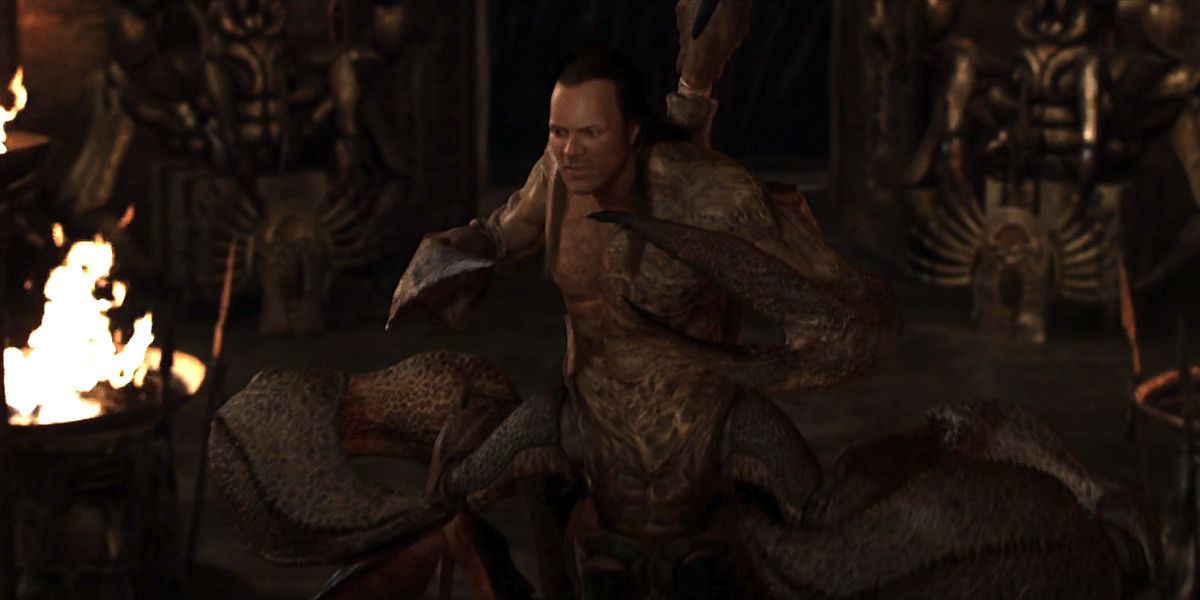
Most people would agree that Dwayne “The Rock” Johnson is already sufficiently intimidating without needing further enhancement (digital or otherwise). But visual effects-obsessed auteur Stephen Sommers apparently disagrees, as he swapped out the flesh-and-blood Johnson for a painfully fake-looking version in The Mummy Returns.
Admittedly, there’s really no way to create a half-man / half-scorpion monster person without resorting to CGI, but the technology required to bring such an outlandish creature to life really didn’t exist back in 2001.
Since the best that could be done was a distractingly video game-esque facsimile of Johnson’s likeness coupled with a crudely textured arachnid torso, Sommers should probably have figured out this wasn’t going to fly. Indeed, the director – not to mention audiences – would have been far better off had he redrafted the film’s finale to incorporate a revived, fully human Scorpion King instead.
—
Did we miss any terrible CGI villains? Let us know in the comments!




